1,2,4-Benzenetricarboxylic acid
Synonym(s):Benzene-1,2,4-tricarboxylic acid;Trimellitic acid
- CAS NO.:528-44-9
- Empirical Formula: C9H6O6
- Molecular Weight: 210.14
- MDL number: MFCD00002470
- EINECS: 208-432-3
- SAFETY DATA SHEET (SDS)
- Update Date: 2025-09-09 18:15:22
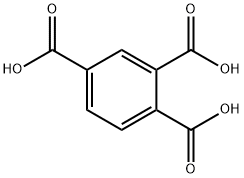
What is 1,2,4-Benzenetricarboxylic acid?
Chemical properties
Colorless crystals.Partially soluble in DMF and alcohol; insoluble in benzene and carbon disulfide; slightly soluble in water.
The Uses of 1,2,4-Benzenetricarboxylic acid
1,2,4-Benzenetricarboxylic acid (trimellitic acid) is generally used as carboxylate ligand in the synthesis of a wide range of metal-organic frameworks (MOFs). It can also be used to synthesize Ln3+ encapsulated nanocrystals which exhibit white-light luminescence.
The Uses of 1,2,4-Benzenetricarboxylic acid
Intermediate in the preparation of resins, plasticizers, dyes, inks, adhesives.
Definition
ChEBI: Benzene substituted at the 1,2, and 4 positions by carboxy groups.
Purification Methods
Crystallise the acid from acetic acid or aqueous EtOH. [Beilstein 9 IV 3746.]
Properties of 1,2,4-Benzenetricarboxylic acid
| Melting point: | 229-231 °C (dec.) (lit.) |
| Boiling point: | 309.65°C (rough estimate) |
| Density | 1.4844 (rough estimate) |
| refractive index | 1.6630 (estimate) |
| storage temp. | Sealed in dry,Room Temperature |
| solubility | 2.1g/l |
| pka | pK1: 2.52;pK2: 3.84;pK3: 5.20 (25°C) |
| form | Crystalline Powder |
| color | White |
| Water Solubility | 2.1 G/100 ML (25 ºC) |
| Merck | 14,9702 |
| BRN | 2214815 |
| CAS DataBase Reference | 528-44-9(CAS DataBase Reference) |
| NIST Chemistry Reference | 1,2,4-Benzenetricarboxylic acid(528-44-9) |
| EPA Substance Registry System | 1,2,4-Benzenetricarboxylic acid (528-44-9) |
Safety information for 1,2,4-Benzenetricarboxylic acid
| Signal word | Warning |
| Pictogram(s) |
 Exclamation Mark Irritant GHS07 |
| GHS Hazard Statements |
H315:Skin corrosion/irritation H319:Serious eye damage/eye irritation H335:Specific target organ toxicity, single exposure;Respiratory tract irritation |
| Precautionary Statement Codes |
P261:Avoid breathing dust/fume/gas/mist/vapours/spray. P264:Wash hands thoroughly after handling. P264:Wash skin thouroughly after handling. P271:Use only outdoors or in a well-ventilated area. P280:Wear protective gloves/protective clothing/eye protection/face protection. P302+P352:IF ON SKIN: wash with plenty of soap and water. P305+P351+P338:IF IN EYES: Rinse cautiously with water for several minutes. Remove contact lenses, if present and easy to do. Continuerinsing. |
Computed Descriptors for 1,2,4-Benzenetricarboxylic acid
| InChIKey | ARCGXLSVLAOJQL-UHFFFAOYSA-N |
New Products
4,4-Difluoropiperidine hydrochloride tert-butyl 9-methoxy-3-azaspiro[5.5]undecane-3-carboxylate Indole Methyl Resin N-Isopropylurea N,N-Dicyclohexylcarbodiimide(DCC) MELDRUMS ACID 5-METHYLISOXAZOLE-4-CARBOXYLIC ACID Magnessium Bis glycinate Zinc ascorbate 1-bromo-2-butyne 2-acetamidophenol 9(10H)-anthracenone Erythrosin B, 4-Piperidinopiperidine 2-((4-morpholinophenylamino) (methylthio) methylene) malononitrile 2,4-dihydroxybenzaldehyde 3-(4-morpholinophenylamino)-5-amino-1H-pyrazole-4-carbonitrile Methyl 2-methylquinoline-6-carboxylate 2,6-dichloro-4-nitropyridine 4-Bromo-2-chlorobenzonitrile 2-(benzylamino)acetic acid hydrochloride 4-(tert-Butoxycarbonylamino)but- 2-ynoic acid 3,4-dihydro-2H-benzo[b][1,4]dioxepine 1-Phenyl-1-cycloprppanecarboxylicacidRelated products of tetrahydrofuran
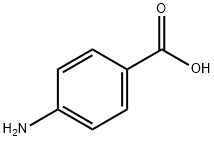
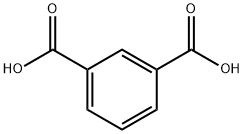


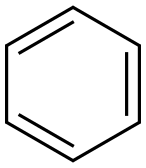
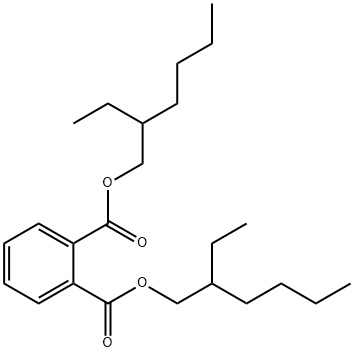


You may like
-
 1,2,4-Benzenetricarboxylic acid CAS 528-44-9View Details
1,2,4-Benzenetricarboxylic acid CAS 528-44-9View Details
528-44-9 -
 Trimellitic Acid CAS 528-44-9View Details
Trimellitic Acid CAS 528-44-9View Details
528-44-9 -
 1,2,4-Benzenetricarboxylic acid CAS 528-44-9View Details
1,2,4-Benzenetricarboxylic acid CAS 528-44-9View Details
528-44-9 -
 3-(4-amino-1-oxoisoindolin-2-yl)-1-methylpiperidine-2,6-dione 98%View Details
3-(4-amino-1-oxoisoindolin-2-yl)-1-methylpiperidine-2,6-dione 98%View Details -
 20677-73-0 (2,2-diethoxyethyl)methylamine 98%View Details
20677-73-0 (2,2-diethoxyethyl)methylamine 98%View Details
20677-73-0 -
 3-(4-(hydroxyamino)-1-oxoisoindolin-2-yl)piperidine-2,6-dione 98%View Details
3-(4-(hydroxyamino)-1-oxoisoindolin-2-yl)piperidine-2,6-dione 98%View Details -
 57381-49-4 2-bromo-4-chlorobenzonitrile 98%View Details
57381-49-4 2-bromo-4-chlorobenzonitrile 98%View Details
57381-49-4 -
 4,6-dichloropyrimidine-5-carbaldehyde 98%View Details
4,6-dichloropyrimidine-5-carbaldehyde 98%View Details
5305-40-8
Statement: All products displayed on this website are only used for non medical purposes such as industrial applications or scientific research, and cannot be used for clinical diagnosis or treatment of humans or animals. They are not medicinal or edible.
